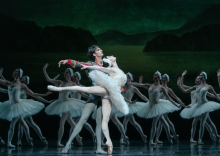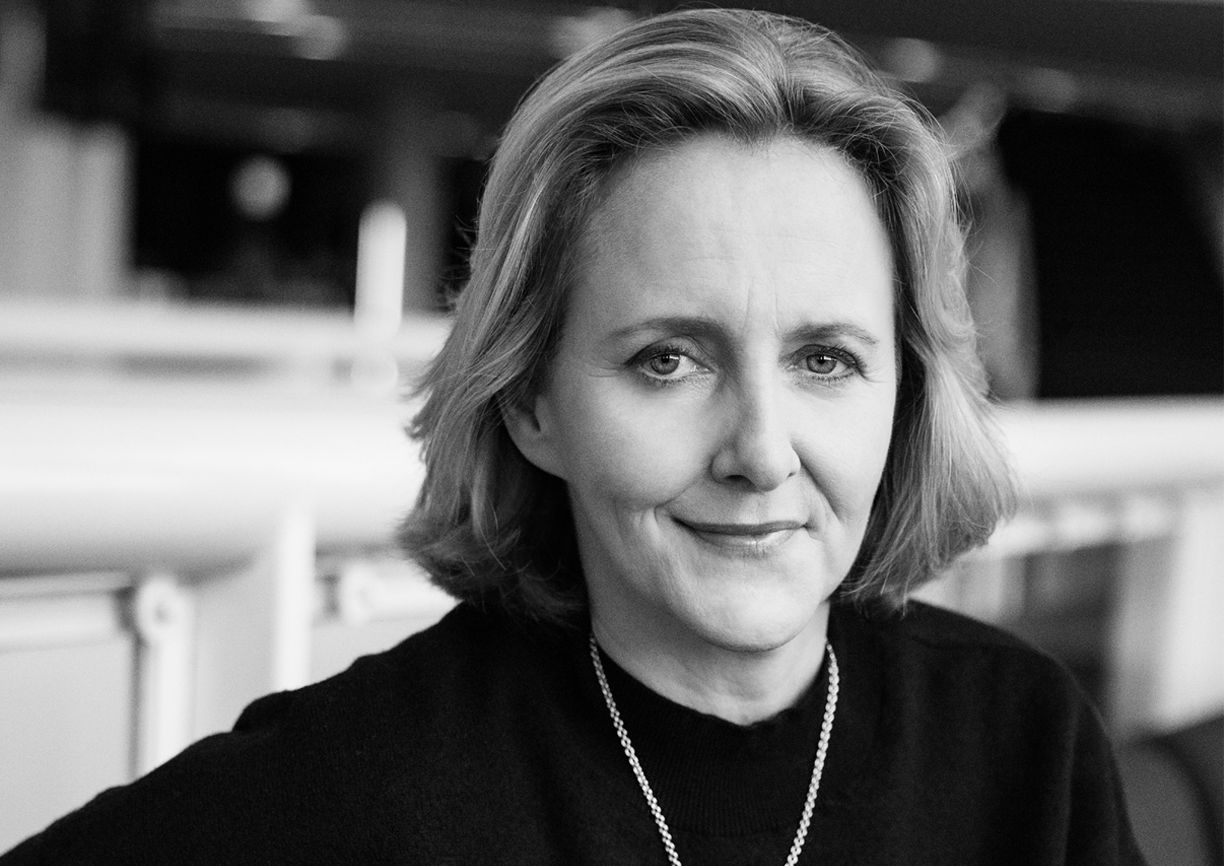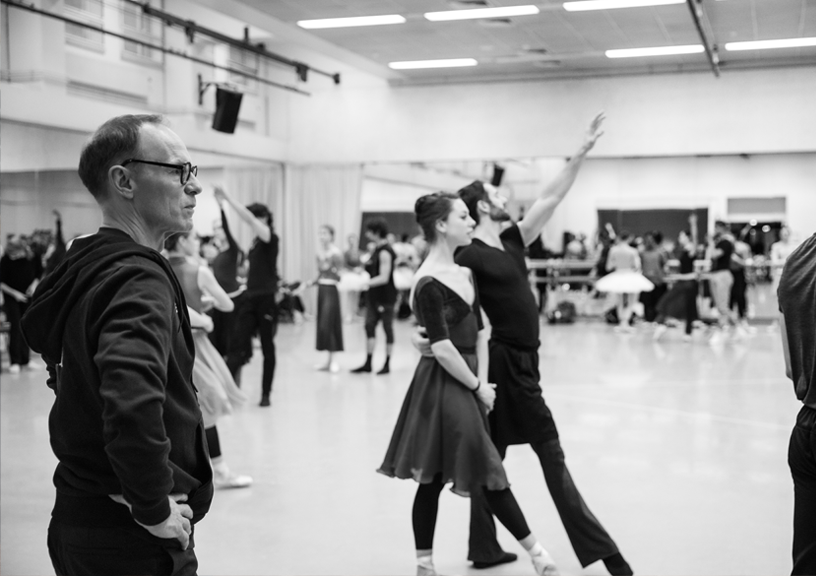The theme is taken from iconic words in Bizet’s Carmen, but reframed as a question rather than a statement: “Hasn’t freedom become one of the most controversial topics in society?” Sophie asks herself. “Now more than ever, everyone seems to be preoccupied with the idea of freedom because it’s under such pressure. Everyone is being confronted in one way or another with the question of what freedom means. It's a broad and multi-layered concept. This is something we want to highlight from multiple perspectives in the new season.”
The freedom to build a season
After all the restrictions that wore so heavily on the previous season, Sophie is eagerly anticipating the future. “Hopefully this will be a season we can present in its entirety, as originally planned. That would be such a relief, even cathartic in a sense.” It’s not hard to imagine why. “Putting together an opera season is complex. We want to open up the world of opera to wider audiences as much as we can. To ensure that the arts matter and play a central role in our society.”
Planning an opera season is not about “filling in the blanks” with a mix of well-known operas from the repertoire. It requires an overarching creative vision that brings together specific works and artists, while factoring in audience expectations as well as practical and financial considerations. Sophie elaborates: “It’s about seeing the big picture and how countless elements tie in with this, how they work together and reinforce one another. We want our season to celebrate a wide range of projects and artists. It is our aim to showcase the power and beauty of the opera repertoire, while simultaneously chartering new territory. From this perspective, the season features popular titles such as Carmen and Turandot alongside projects such as Operetta Land by Steef de Jong or Blue by Jeanine Tesori.”
“We have also chosen to present Königskinder – an opera by Humperdinck that is rarely performed – and have embarked on projects such as Ändere die Welt!. These operas and projects conjure up different worlds and will enable us to target specific audiences. Our chief conductor Lorenzo Viotti is embracing this path: he will not only conduct the grand repertoire, but also the family production Operetta Land. Perle Noire, developed by soprano Julia Bullock about Joséphine Baker, is also part of the programme. This production is not a run-of-the-mill tribute to Baker based on her songs, rather it is an operatic musing or meditation, featuring new compositions by Tyshawn Sorey. And with the Verdi Requiem, we are taking further important steps in our collaboration with Dutch National Ballet.”
The arts have the power to widen our horizon, intellectually and emotionally – allowing us to experience a deeper truth.
“Putting together a programme such as this requires a high level of artistic freedom. This is not self-evident in the world of opera, which is why I am so grateful that we are supported in these endeavours in the Netherlands. We have received a great deal of encouragement all-round – particularly from our audiences, who are joining us in our exploration of new repertoire.”
The opera world regularly faces questions about its relevance. How does this play a role when crafting a new season? Sophie responds: “The artistic freedom we are given means we are able to select projects that reflect on current issues and the world we’re living in. The opera Blue by composer Jeanine Tesori and librettist and director Tazewell Thompson is one of the most pertinent examples of this. It is an opera that resonates with the Black Lives Matter movement, asking probing questions about who actually has the freedom to enter the world of activism. It looks at generational conflict and identity issues as experienced by an African American family: the father, a police officer, struggles to come to terms with his own identity as a ‘Black man in blue’, while his son – a young activist – is tragically confronted with his own limited freedom when trying to fight injustice. The community plays a pivotal role in this conflict and is also instrumental in its resolution.”
Alexander Raskatov’s world première of Animal Farm is another opera that mirrors today’s world. Sophie elaborates: “George Orwell once wrote: “freedom is as essential to man as his daily bread”. This idea is central to Animal Farm – a timeless classic about the pursuit of freedom in a society characterised by suppression and oppression. It illustrates how difficult it is for a movement to uphold its ideals, how easy it is for society to default to a system of power and control, which ultimately leads to violence and a new reign of terror.”
The paradox of freedom
Discussing the theme of ‘freedom’ reminds Sophie of a fellow Geneva citizen, philosopher Jean-Jacques Rousseau. “His work Du contrat social opens with a fascinating sentence: ‘Man is born free but everywhere is in chains’. This signifies the paradox of freedom: to be free means to be bound in some way. And it’s this contradiction that makes freedom such a topic of interest. Social structures and conditioning are supposed to protect many of our freedoms, but they also come with limitations. For many people, these limitations feel like hindrances. Collective freedom clashes with individual freedom. At the same time, we are very fortunate to live in a country that attaches a great deal of importance to freedom and has a history of providing a safe haven for those fleeing from persecution and discrimination. This sense of freedom is vital, and it also helps nurture the artistic freedom in our opera house.”
“The continuous tension that exists between collective and individual freedom is also explored in many operas. The character of Carmen, for instance, is completely infatuated with – as the libretto puts it – ‘La chose enivrante – la liberté’; that most intoxicating thing of all: freedom. Carmen is relentless in her pursuit of freedom, refusing to submit to anyone or anything. And yet, ironically, it is this tireless obsession that leads to her downfall.”
“Perle Noire shares some of these themes, though in a different context: it tells the story of Joséphine Baker who, much like Carmen, strove for freedom, but then came face to face with its constraints. Baker is one of the most celebrated artists and personalities of the 20th century as well as an icon of liberty. To become successful in a white world, however, she had to perform the stereotypical role of – in her own words – ‘the savage’ on stage, which limited her freedom of artistic expression. Julia Bullock, composer Tyshawn Sorey and director Peter Sellars aim to reveal Joséphine’s inner world in Perle Noire. They want to expose her pain and struggles.”
“Something similar can be said of Mary Stuart, one of the main characters in Donizetti’s Maria Stuarda. While she is very different to icons such as Carmen or Baker, she too was a rebel, who literally and figuratively fought for freedom, even daring to confront the most powerful woman in the world at that time, Elisabeth I.”
Art as an eye-opener and means of resistance
Freedom is not a given – hence the question mark after this season’s theme. Sophie elaborates: "What struck me about the 2021 International Documentary Film Festival Amsterdam (IDFA) was the sheer number of documentaries about young people struggling in today’s world. They often don’t feel heard and have trouble finding their way in life. Societies function on the basis of certain principles, but many young people feel older generations have not got their priorities right. This leaves them wondering how to live, how to grow and what the future holds for them. An opera such as Humperdinck’s Königskinder may be from the 19th century, but it timelessly exposes this tension. It tells the story of two young lovers trying to carve their own path after rejecting the norms of the establishment – which ultimately leads to their undoing.”
“Opera is an eye-opener. Therein lies part of the power and beauty of opera and the arts. They encourage us to take a stand, to fight against hypocrisy, complacency, injustice and small-mindedness – all of which sometimes affect the world we live in. Freedom is inextricably linked to the power of resistance – to being able to defy what is imposed on us. It opens up avenues to move forward and discover new ways of living.”
“Artists can show us different perspectives. They can change the way we look at things by widening our horizons, not just intellectually but also emotionally – allowing us to experience a deeper truth. A look at the methods used to create Ändere die Welt! illustrates this point. Composer Leonard Evers, director Mart van Berckel and the singers of Dutch National Opera Studio are working together to uncover how revolutions work. They are exploring different eras in time, looking to the past and the present, in order to unite in sound and imagery what is normally separated by time. What have we gained from humanity’s fight for freedom? What matters to protesters? Ändere die Welt! will raise these questions.”
“I firmly believe in the power of opera, in the energy and different messages it conveys. It stimulates us to think about the direction we want to head in as individuals and as a society. I hope that the new season, with its varied mix of artists, approaches and topics will generate an inspiring dialogue.”
Text: Luc Joosten







